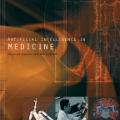While accurate lip synchronization has been achieved for arbitrary-subject audio-driven talking face generation, the problem of how to efficiently drive the head pose remains. Previous methods rely on pre-estimated structural information such as landmarks and 3D parameters, aiming to generate personalized rhythmic movements. However, the inaccuracy of such estimated information under extreme conditions would lead to degradation problems. In this paper, we propose a clean yet effective framework to generate pose-controllable talking faces. We operate on raw face images, using only a single photo as an identity reference. The key is to modularize audio-visual representations by devising an implicit low-dimension pose code. Substantially, both speech content and head pose information lie in a joint non-identity embedding space. While speech content information can be defined by learning the intrinsic synchronization between audio-visual modalities, we identify that a pose code will be complementarily learned in a modulated convolution-based reconstruction framework. Extensive experiments show that our method generates accurately lip-synced talking faces whose poses are controllable by other videos. Moreover, our model has multiple advanced capabilities including extreme view robustness and talking face frontalization. Code, models, and demo videos are available at https://hangz-nju-cuhk.github.io/projects/PC-AVS.
翻译:虽然对任意主题的音频驱动的谈话面部的生成实现了准确的口吻同步,但如何有效驱动头部的问题仍然存在。以前的方法依赖于预估的结构信息,如地标和3D参数,目的是产生个性化的节奏运动。然而,在极端条件下,这种估计信息的不准确性会导致退化问题。在本文件中,我们提议了一个干净而有效的框架,以产生可控制的声音面部。我们用原始图像操作,只用一张照片作为身份参考。关键在于通过设计一个隐含的低分解面部组合码将视听演示模块化。在很大程度上,语音内容和头部的信息都存在于一个共同的非身份嵌入空间中。虽然语音内容信息可以通过学习视听模式之间的内在同步来界定。但我们发现,在一个以变制的以革命为基础的重建框架中,将学习一个组合代码作为补充。我们的方法生成了准确的亲近的口吻的语音面部面部,其构成可以被其他视频控制。此外,我们的模型具有多种先进能力,包括极端的视觉坚固性和对面部/AVALMS/SDMD/AVD/SDMD/AVDMDMUD/MAD/MADMDMDMDMDMUDMSUDMUDMDMSUDMDMSUDRMDMDMDMDMDMDMS/MADMDMDMDMDMDMDMDMDRMDMDMDMDMDMDMDMDMDRMDVDVDRMDVDVDRMDVDVDRMDMDRMDVDVDVDVDVDMDVDVDVDVDVDVDVDMDMDVDVDMDMDMDMDFDFDFDFDVDVDVDPDPDFDVDF。




